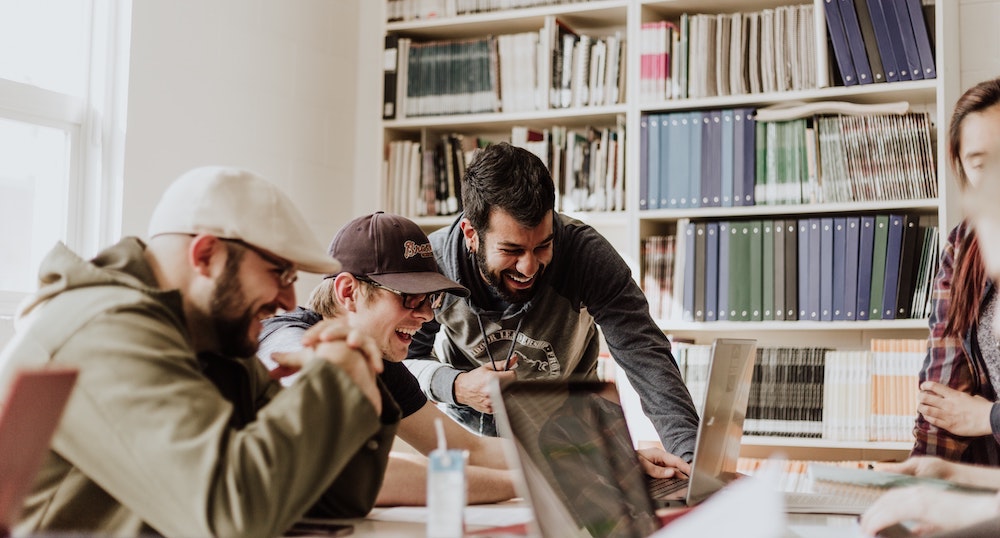
Learning through working together
Being submerged in reports about the impact of important technological and societal trends at work doesn’t stop us from still thinking of most professions in a deeply traditional way.
The same job...?
A nurse takes care of sick people. An IT engineer develops software.
In reality, a nurse also manages electronic patient files, operates complicated technical devices and takes ever changing administrative regulations into account. The IT engineer, on the other hand, needs to demonstrate excellent customer friendly behaviour and must involve the end users in the development proces - all this while being part of a highly diverse project team.
Jobs change and competencies change along.
New competencies !
The amount of administrative tasks have increased in any job and everyone is requested to be more accountable, be it to the customer, the government or to the management.
It used to be pretty suave to proclaim how busy you were but that is now frowned upon. Instead, you need to ‘manage your priorities, ‘stay focused’ and make sure to ‘ take everyone along on the company’s journey’.
You no longer work in a team with like-minded colleagues, you are now working in a ‘multidisciplinary’ and ‘agile’ way, preferably in a ‘professional network environment’.
You don’t obtain the new competencies that come with all these changes overnight. You can offer workshops - classical or digital, you can create "learning communities" and “knowledge sharing forums”, you can put excellent material at your team’s disposal … but in all of the above cases learning and working remain separate entities.
Learning through working together
As people are already working together, would it not be more efficient to turn this collaboration into a learning intervention ?
By connecting working and learning you get double bang for your buck : participants have accomplished something together and they’ve further developed their skills.
We applied this principle twice for the engineers organisation “ie-net”. During a weekend, these young engineers worked two days together in different teams to develop a solution for a complex technical problem. One year the topic was a mobility question in China, another year they needed to come up with solutions for intelligent clothing. At the end of the weekend, the teams had to present their solution to a group of stakeholders and investors.
We observed how the collaboration in the teams went : who took on a leadership role, how did they consult with each other, did they negotiate with the other teams, did everyone stay engaged, how convincing was their presentation ? Based on these observations we regularly gave feedback and made a link to what we heard and saw to more conceptual knowledge.
Participants loved the experience. They were super motivated to get the best result possible and they experienced first hand how ‘soft skills’ increased their chances to succeed. This is “collaborative learning”. You work with others to obtain a goal and in the meantime you learn new skills.
Eight simple tips
However, it doesn’t suffice to just put your team to work. If you want to turn collaboration into a learning experience you need to do this very consciously. These tips help you on your way.
1. Determine clearly which competenties you wish to develop. Take this into account when you pick a project or a task.
2. Make sure this project works towards a well defined goal, a new product or a process improvement for instance. What you ask should be challenging but not impossible.
3. Set clear expectations. Results come first but communicate which learning goals you want to achieve: an excellent collaboration, a convincing presentation, consensus based decision making …
4. Opt for a challenge in which team members are inter-dependent : they need to combine their own knowledge and expertise with that of others and they need to share information.
5. Consider carefully how you will compose the team that is going to execute the task. By combining people with a different background, know-how or experience you challenge them to deal with differences constructively and to look for solutions in a creative way.
6. Make sure to build specific learning moments in the process in order to reinforce the learning experience. These moments could entail short educational movies, a quick exercise or information about a specific model or concept.
7. Create a safe team environment and let the team members take their own responsibility for the group dynamics and proces.That is one of the reasons why you formulate your expectations about dynamics and proces upfront.
8. Discuss the results and the proces that led to them. How was their work organised ? Who took the lead? Was everyone included ? How did they handle conflicts? How did they take decisions ?
The world seems to evolve increasingly faster and work is becoming more complex by the day. At the same time, our results no longer seem to depend solely on ourselves but more on others as well. It’s a good thing that nature designed us to be social creatures who are inclined to collaborate.
And this is precisely the reason why working together could be the best basis for any successful learning intervention.
Laisser un commentaire